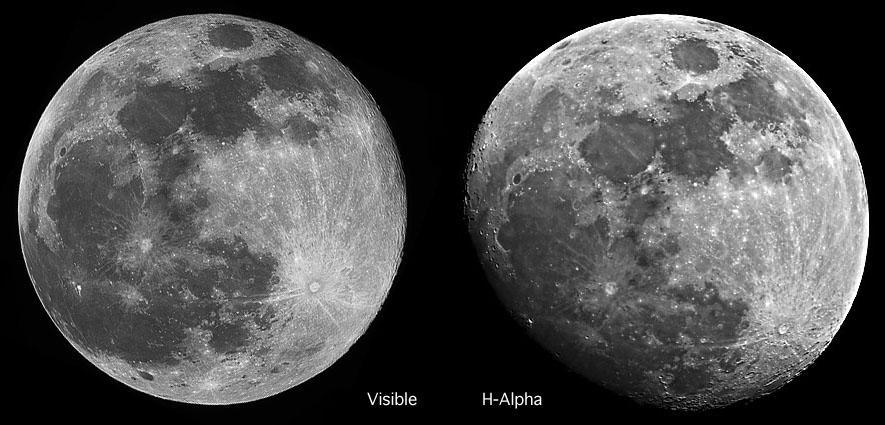Difference between revisions of "October 22, 2004"
| Line 52: | Line 52: | ||
</table> | </table> | ||
<p> </p> | <p> </p> | ||
| − | + | {{wiki/ArticleFooter}} | |
| − | |||
| − | |||
| − | |||
| − | |||
| − | |||
| − | |||
| − | |||
| − | |||
| − | |||
| − | |||
| − | |||
Revision as of 18:07, 1 February 2015
H-Alpha Moon
Image Credit: Frank Barrett |
|
H-Alpha Moon Most images of the Moon are taken in visible light, which is where human eyes are most sensitive. But here (right) is one taken through a hydrogen-alpha filter which is normally used to image the Sun in a narrow red part (656.3 nm) of the visible spectrum. I compare this image to Frank's previous LPOD (and APOD!) image on the left which was taken in visible light. I enhanced both images, making comparison a little uncertain. Nevertheless, there are a few interesting comparisons. first, the two images look quite similar - probably because the Sun is quite bright at H-alpha wavelengths, contributing significantly to its total visible brightness. Second, there are some differences. In H-alpha, Mare Nectaris is more muted - the rays that cross it are more strongly depicted. The same seems true for maria Fecunditatis and Crisium - both are low in titanium. Additionally, the dark mare patches south of Mare Serenitatis have more contrast on the H-alpha image. Frank's image suggests that amateurs may want to experiment imaging the Moon thru different color filters to explore compositional differences in the maria. Technical Details: Related Links: Yesterday's LPOD: 60 of Tycho Tomorrow's LPOD: Imaging the First Lunar Photographer |
|
Author & Editor: Technical Consultant: Contact Translator: A service of: |
COMMENTS?
Register, Log in, and join in the comments.




